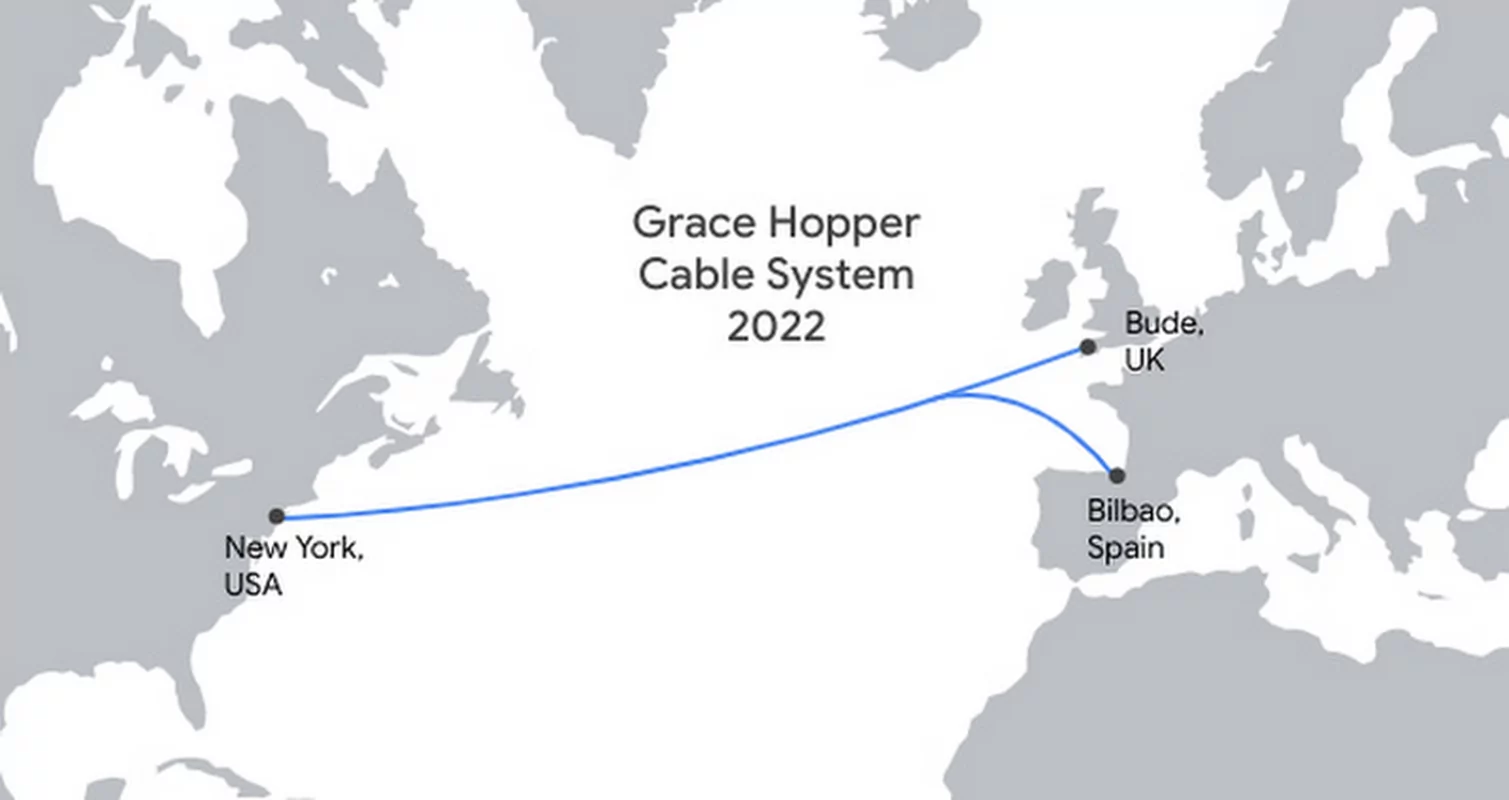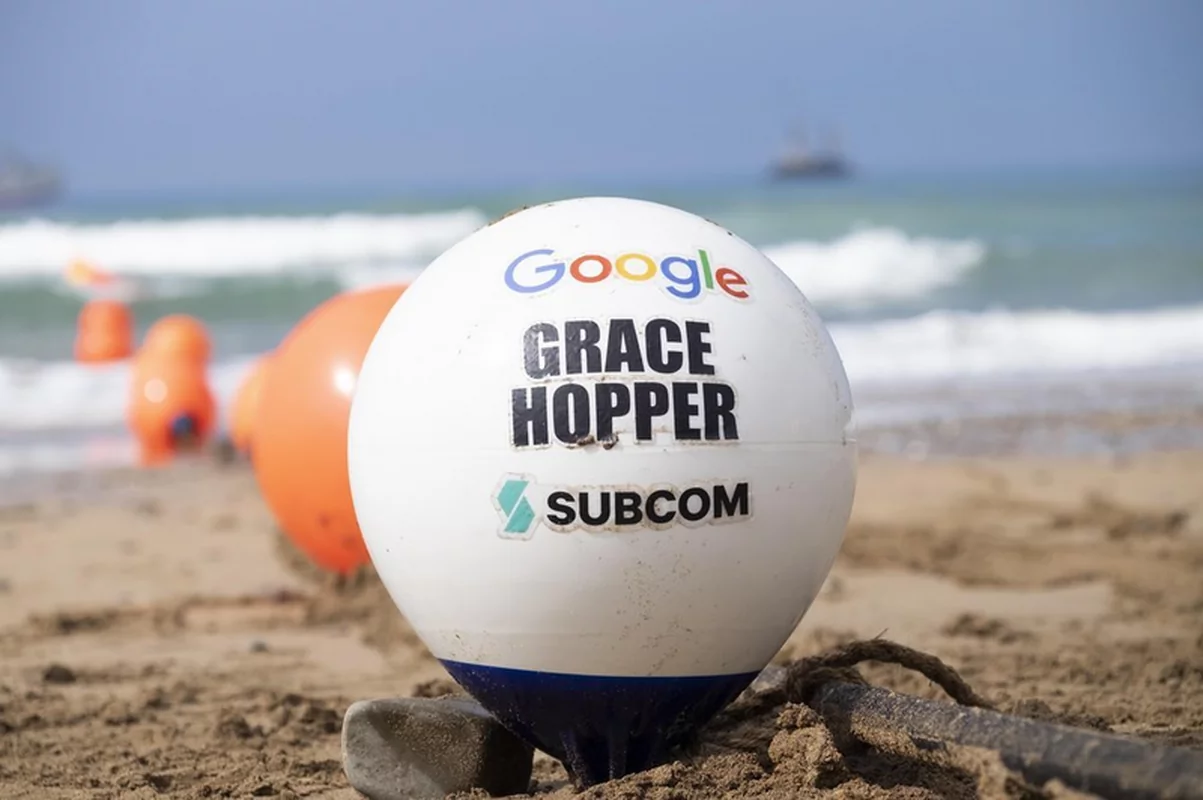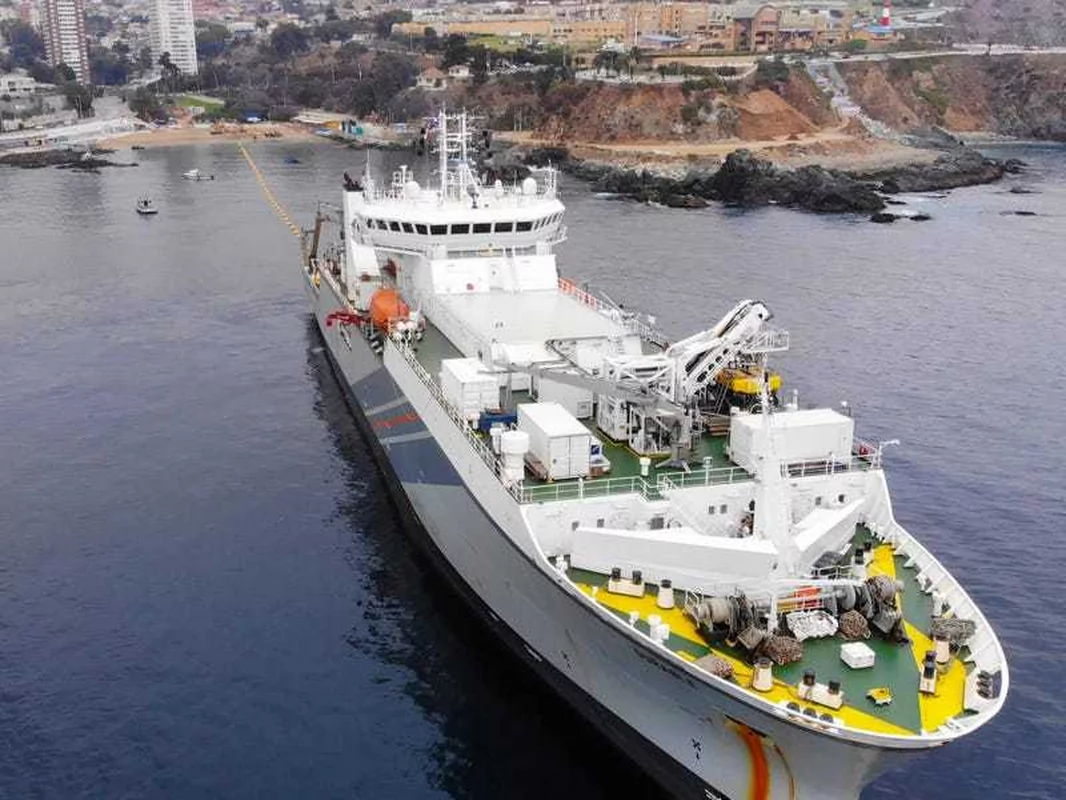Google and Facebook have laid thousands of kilometers of optical fibers connecting continents to the ocean floor to provide global access to the Internet.
A cable-laying submarine sails past icebergs during a project to build a fiber optic link between Canada, Greenland and Iceland.
Both companies often partner with a consortium of five other companies to build submarine fiber optic networks. Google also has five implementations of its own.

Google is investing a total of 19 offshore cable projects around the world. In turn, Facebook was involved in the laying of two existing optical fibers, and is currently involved in five more projects for the implementation of submarine cables.
The whole process begins with mapping the cable route. Jane Stowell, a strategic negotiator at Global Infrastructure for Google, told Insider that it takes up to a year to figure out the right way to run a submarine cable.
Facebook conducts bathymetric and geophysical surveys along the planned route, which allows planning the optimal cable layout with an accuracy of one meter, says a company spokesman.
Ships equipped with sonars to map the seabed are sent out into the ocean to gather the information needed to plan a route. Units check the route for hazards such as sea currents, underwater landslides, unexploded ordnance or sea mines.
“The sea cable is about the thickness of a garden hose, laid on the bottom,” explains Stowell.
The optical fibers are wrapped in a copper sheath that allows current to pass through. “In the next step, a plastic and steel cover is added to improve the cable’s waterproofness and resistance to adverse underwater phenomena such as strong currents, earthquakes or the impact of fishing trawlers,” adds a Google expert.

Facebook’s 2Africa cable used aluminum instead of copper. This made it possible to reduce production costs while expanding the range of optical fibers. 2Africa should be located around Africa. Its length will be 37 thousand. km – slightly less than the circumference of the Earth.
When the cable laying route has already been worked out and the optical fiber itself is ready, the stage of loading the cable onto the ships used for laying cables along the bottom begins.
In the technology industry, 50-55 vessels are used to lay cables on the seabed. The crew of one such ship is up to 100 people. The actual process of loading the cable onto the ship can take up to four weeks, explains Stowell.
It takes between 30 and 50 crew members to manage ships that implement Facebook projects.
The process of unwinding the cable begins when the ship leaves the port. When working in deeper waters, a trench is dug on the seabed with a special plow, into which the optical fiber is then laid.

As the ship goes further, the cable is covered by the natural movement of water, the expert explains. – The ocean plow is not much different from what the farmers use, except, perhaps, that it is much larger than their plow. The ocean plow is the height of a two-story building, Stonewall points out and adds that the underwater plow is only used at a depth of 1,500 meters. m.
– At a depth of less than 1.5 thousand people. the cable can be damaged by other ships. The most common of these, he notes, are nets released by trawlers and anchors dropped from ships during storms.
In the deeper regions of the oceans and seas, underwater optical fiber is less vulnerable to hazards, therefore, it does not require additional deep-sea work or reinforcement of its structure.
Long distance cables are equipped with amplifiers placed every 100 km of cable. They allow you to amplify the signal and maintain data flow.

“Although the cleanest glass in the world is used for the production of optical fibers, the intensity of the light beam begins to weaken over long distances,” the expert says. Amplifiers help restore the original intensity of the light beam.
Special buoys are used to keep the cable afloat. Divers and crews of jet skis and small boats take care of the correct placement of the optical fiber.
At the final stage of the work, the fiber is pulled to the shore and placed in a specially prepared trench leading to a hatch on the shore. It leads to the reservoir, where the marine cable connects to the land cable, which in turn leads to the land station.
Grace Hopper’s optical fiber, which has reached the UK coast, is expected to transfer 340 terabytes of data per second. “This means that 17.5 million people will be able to simultaneously watch the movie in 4K quality streaming services,” explains Stowell.

